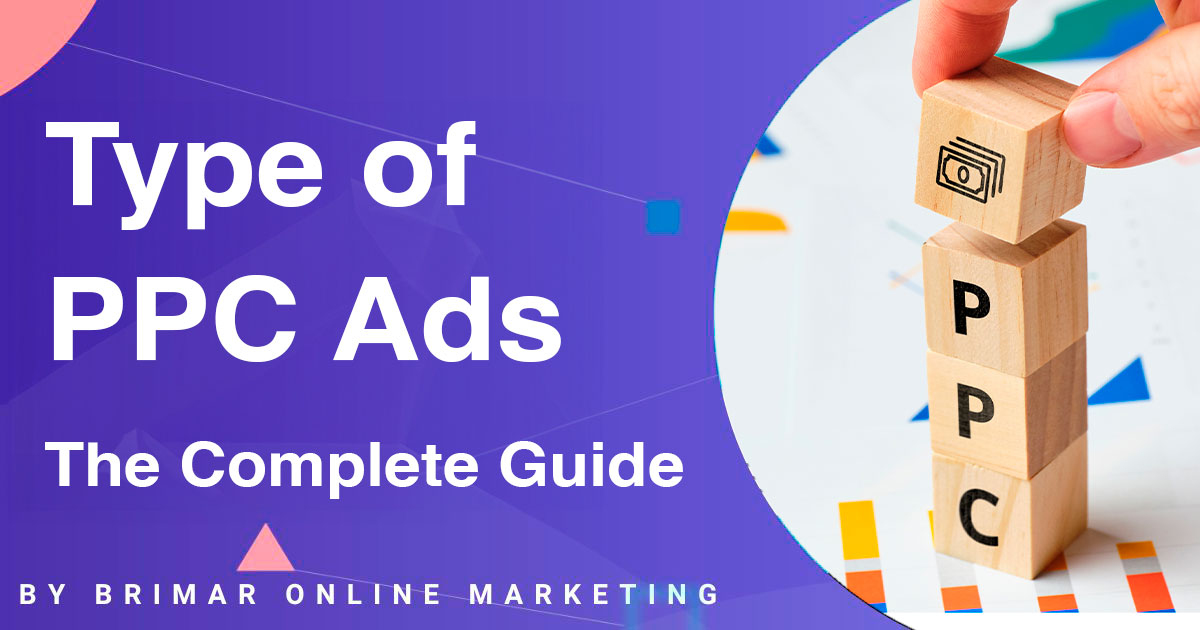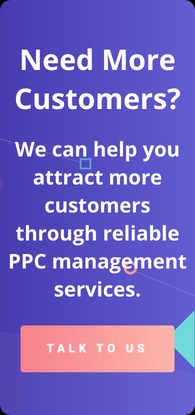
Pay-per-click (PPC) advertising is a cornerstone of digital marketing, offering businesses a powerful way to reach their target audience and achieve their marketing goals.
Knowing the various PPC ad types and their functions allows businesses to create impactful campaigns that drive traffic, increase conversions, and enhance brand awareness.
Let’s dive into the various types of PPC ads and explore how they can benefit your business.
Search Advertising
Search advertising is one of the most common forms of PPC advertising.
These ads are displayed on search engine results pages (SERPs) when users input certain keywords.
Google Ads and Microsoft Advertising (formerly Bing Ads) are the primary platforms for search advertising.
When you create a search ad, you bid on relevant keywords that potential customers might use when searching for products or services similar to yours.
The goal is to have your ad appear at the top of the search results, increasing the likelihood that users will click on it.
How It Works
Search ads are triggered by user search queries.
The advertiser’s ad competes in an auction against other advertisers bidding on the same keywords.
The position of the ad is determined by several factors, including the bid amount, ad rank, and quality score.
Key Elements
- Specific Keywords: Choosing the right keywords is crucial. Keywords should be relevant to your business and the search intent of your potential customers.
- Negative Keywords: These are keywords you don’t want your ads to show up for. They help you avoid irrelevant traffic and reduce wasted ad spend.
- Ad Copy: Crafting compelling ad copy that includes your main keywords can improve your ad’s click-through rate (CTR) and relevance.
- Ad Rank: This is determined by your bid amount and quality score. A higher ad rank can lead to better ad placement.
- Quality Score: A measure of the relevance and quality of your ads, keywords, and landing pages. Higher quality scores can lower your costs and improve your ad position.
Search advertising is a highly effective way to reach potential customers who are actively searching for products or services like yours.
Effectively targeting specific keywords and optimizing your ad copy and landing pages can drive qualified traffic to your website and achieve excellent results.
Start Attracting Customers Through PPC Advertising Today!
We can help you create PPC campaigns that attract customers. Our services include bid management, keyword management, landing page performance reviews, and more.
Display Advertising
Display advertising involves placing ads on websites, apps, and social media platforms.
These ads can take various forms, including image ads, banner ads, and rich media ads.
The Google Display Network (GDN) stands out as a highly favored platform for display advertising.
Display ads are designed to capture the attention of users who are browsing the web, watching videos, or using mobile apps.
They can appear on millions of websites and reach a broad audience.
Types of Display Ads
- Image Ads: These are static or animated images that can appear in various sizes and formats. They are often used to build brand awareness and attract new customers.
- Banner Ads: These are a type of image ad that typically appears at the top or bottom of a webpage. They are designed to be eye-catching and drive clicks.
- Rich Media Ads: These ads include interactive elements such as video, audio, and clickable buttons. They can be highly engaging and drive higher interaction rates.
Benefits
- Brand Awareness: Display ads are excellent for increasing brand visibility and recognition. They can help you reach a wider audience and reinforce your brand message.
- Target Audience: You can target specific audiences based on demographics, interests, and online behavior. This guarantees that your ads reach the appropriate audience.
- Ad Formats: Display ads come in various formats, allowing you to choose the best type of ad for your campaign goals.
Display advertising is a versatile and effective way to reach potential customers and build brand awareness.
Employing engaging ad formats and reaching the right audience with display advertising can help you achieve your marketing objectives effectively.
Social Media Advertising
Social media advertising involves placing ads on platforms like Facebook, Instagram, LinkedIn, and X (Twitter).
These ads can be highly targeted, allowing you to reach specific audiences based on demographics, interests, and behaviors.
Social media ads are designed to appear in users’ feeds, stories, or sidebar areas.
They can include various ad formats such as image ads, video ads, carousel ads, and sponsored posts.
Types of Social Media Ads
- Image Ads: These are static images that appear in users’ feeds or stories. They are great for capturing attention and driving engagement.
- Video Ads: These ads include video content that can be highly engaging. Video ads can appear in users’ feeds, stories, or as in-stream ads.
- Carousel Ads: These ads let you display a series of images or videos within a single advertisement.
- Sponsored Posts: These are regular posts that you pay to promote. They appear in users’ feeds like organic posts but are labeled as “Sponsored.”
Benefits
- Target Audience: Social media platforms offer advanced targeting options, allowing you to reach specific audiences based on their interests, behaviors, and demographics.
- Ad Formats: Social media ads come in various formats, giving you the flexibility to choose the best type of ad for your campaign goals.
- Engagement: Social media ads can drive high engagement rates, helping you build relationships with potential customers and increase brand loyalty.
Social media advertising is a powerful way to reach potential customers and engage with your audience.
Creating highly targeted social media ads in various engaging formats can effectively reach your audience and boost engagement.
Google Shopping Ads
Google Shopping Ads are a type of PPC ad that allows retailers to promote their products directly in Google search results.
These ads include product images, prices, and descriptions, making them highly effective for driving sales.
When users search for specific products, Google Shopping Ads are prominently displayed at the top of Google search results.
They are managed through Google Ads and Google Merchant Center, where you can upload your product feed.
Key Elements
- Product Images: High-quality images are crucial for attracting attention and driving clicks. Make sure your images are clear and accurately represent your products.
- Product Details: Include detailed descriptions, prices, and other relevant information to help users make informed purchasing decisions.
- Bid Amount: Similar to search ads, you bid on keywords related to your products. Your bid amount and quality score will determine your ad’s position.
- Landing Pages: Ensure that your landing pages provide a seamless shopping experience and match the information in your ads.
Benefits
- Conversion Rate: Google Shopping Ads often have higher conversion rates because they provide users with detailed product information upfront.
- Target Customers: These ads target users who are actively searching for products, making them more likely to convert.
- Ad Placement: Shopping ads appear at the top of search results, increasing visibility and driving more clicks.
Google Shopping Ads are a great way to promote your products and drive sales.
Promoting your products with high-quality images and detailed information through Google Shopping Ads can significantly boost your conversion rates.
Remarketing Ads

Remarketing ads are a type of PPC ad that targets users who have previously visited your website or interacted with your brand.
These ads can be displayed across multiple platforms, such as search engines, social media sites, and display networks.
Remarketing ads are designed to re-engage potential customers who have shown interest in your products or services.
They can remind users of your brand, encourage them to return to your site, and ultimately drive conversions.
Key Elements
- Audience Segments: Create audience segments based on users’ behavior on your site. For example, you can target users who visited a specific page or added items to their cart but didn’t complete the purchase.
- Ad Copy: Use personalized ad copy that addresses the user’s previous interactions with your brand. Highlight special offers or incentives to encourage them to return.
- Frequency: Set frequency caps to ensure that users aren’t overwhelmed by your ads.
Benefits
- Re-engagement: Remarketing ads are effective for re-engaging potential customers who have already shown interest in your brand.
- Higher Conversion Rates: These ads often have higher conversion rates because they target users who are already familiar with your brand.
- Cost-Effective: Remarketing ads can be more cost-effective than other types of PPC ads because they target a smaller, more qualified audience.
Remarketing ads are a powerful way to re-engage potential customers and drive conversions.
Re-engaging potential customers through personalized remarketing ads can drive conversions and provide a cost-effective advertising solution.
Video Advertising
Video advertising involves placing ads on platforms like YouTube, Facebook, and Instagram.
These ads can be highly engaging and effective for building brand awareness and driving conversions.
On platforms like YouTube, video ads can be displayed at the beginning, middle, or end of the video content.
They can also appear in users’ feeds or stories on social media platforms.
Video ads can include various formats, such as in-stream ads, bumper ads, and video discovery ads.
Types of Video Ads
- In-Stream Ads: These ads play before, during, or after a video. Users can often skip these ads after a few seconds.
- Bumper Ads: These are brief, mandatory-view ads that appear before a video starts. They are typically six seconds long and are designed to capture attention quickly.
- Video Discovery Ads: These ads appear in YouTube search results and related video sections. They encourage users to click and watch the video.
Benefits
- Engagement: Video ads can be highly engaging and memorable, helping you build a stronger connection with your audience.
- Brand Awareness: Video ads are effective for increasing brand awareness and reaching a wider audience.
- Ad Formats: Video ads come in various formats, allowing you to choose the best type of ad for your campaign goals.
Video advertising is a great way to engage with your audience and build brand awareness.
Using the right ad formats and creating compelling video content drive better results and achieve your marketing goals
Utilizing video ads can create memorable engagements and significantly enhance brand awareness across various platforms.
PPC Ad Types and Formats
There are various formats of PPC ads, each with its own strengths and use cases.
Understanding these formats can help you choose the best type of ad for your campaign goals.
- Text Ads: These are simple ads that appear on search engine results pages. They consist of a headline, a brief description, and a URL.
- Image Ads: These ads include static or animated images and can appear on websites, apps, and social media platforms.
- Video Ads: These ads include video content and can appear on platforms like YouTube and social media.
- Social Ads: These are ads that appear on social media platforms like Facebook, Instagram, and LinkedIn. They can include various formats, such as image ads, video ads, and carousel ads.
- Display Ads: These ads appear on websites and apps within a display network. They can include image ads, banner ads, and rich media ads.
Choosing the Right Format
The best type of ad for your campaign will depend on your marketing goals and target audience.
For example, if you want to increase brand awareness, you might choose image ads or video ads.
If you want to drive conversions, you might choose search ads or shopping ads.
Benefits
- Versatility: PPC ads come in various formats, allowing you to choose the best type of ad for your campaign goals.
- Targeting: Each ad format offers different targeting options, allowing you to reach specific audiences.
- Engagement: Different ad formats can drive different levels of engagement, helping you achieve your marketing goals.
Selecting the appropriate PPC ad format tailored to your campaign objectives can enhance targeting and engagement with your audience.
PPC Platforms

There are several PPC platforms available, each with its own features and benefits.
Understanding these platforms can help you choose the best one for your business goals.
- Google Ads: The most popular PPC platform, offering a wide range of ad formats and targeting options. It includes search ads, display ads, shopping ads, video ads, and more.
- Bing Ads: Now known as Microsoft Advertising, this platform offers similar features to Google Ads but with a smaller market share. It can be a cost-effective alternative for reaching specific audiences.
- Amazon Advertising: This platform is ideal for e-commerce businesses looking to promote their products on Amazon. It includes sponsored products, sponsored brands, and display ads.
- Social Media Platforms: Platforms like Facebook, Instagram, LinkedIn, and X offer advanced targeting options and various ad formats, making them ideal for reaching specific audiences.
- SaaS PPC Agency: Tailored specifically for SaaS companies, this platform focuses on driving high-quality leads and conversions for software businesses. With strategies built around customer acquisition, lead nurturing, and subscription growth, SaaS PPC agencies specialize in using paid search, display ads, and retargeting campaigns to reach potential customers at various stages of their buyer journey.
Choosing the Best Platform
The best PPC platform for your business will depend on your marketing goals and target customers.
For example, if you want to reach a broad audience and drive traffic to your website, Google Ads might be the best choice.
If you want to promote products on an e-commerce site, Amazon Advertising might be more effective.
Benefits
- Targeting: Each platform offers different targeting options, allowing you to reach specific audiences.
- Ad Formats: Each platform offers various ad formats, allowing you to choose the best type of ad for your campaign goals.
- Cost-Effective: Some platforms may offer more cost-effective advertising options, depending on your budget and marketing goals.
Considering your marketing objectives and customer base will help determine the most suitable PPC platform to achieve optimal results.
Ad Groups and Campaign Types
Ad groups and campaign types are essential components of PPC advertising.
Understanding how to organize your ad campaigns and manage ad groups can help you achieve better results.
- Ad Groups: These are sets of ads that share the same keywords and target the same audience. Organizing your ads into ad groups can help you manage your campaigns more effectively.
- Campaign Types: There are various types of PPC campaigns, including search campaigns, display campaigns, video campaigns, and shopping campaigns. Each type of campaign has its own goals and targeting options.
Managing Ad Groups
- Keywords: Select specific keywords that align with each ad group’s focus. This will help you target the right audience and improve your ad’s relevance.
- Ad Copy: Write compelling ad copy for each ad group. Make sure your ad copy is relevant to the keywords and the target audience.
- Bid Amount: Set appropriate bid amounts for each ad group. This will help you achieve better ad placement and control your ad spend.
Optimizing Campaigns
- Ad Testing: Test different ad copy, keywords, and bid amounts to see what works best. Employ A/B testing to evaluate various iterations of your ads.
- Performance Metrics: Monitor key performance metrics like click-through rate (CTR), conversion rate, and average cost-per-click (CPC). Utilize these metrics to fine-tune your campaigns and achieve improved outcomes.
- Budget Management: Set a budget for each campaign and monitor your ad spend. Adjust your budget based on your campaign performance and marketing goals.
Optimizing your ad campaigns through continuous testing and performance monitoring will ensure that your efforts are both effective and cost-efficient.
Keyword Strategies
Choosing the right keywords is crucial for the success of your PPC campaigns.
Understanding how to select and bid on keywords can help you improve your ad’s relevance and achieve better results.
- Relevant Keywords: Choose keywords that are relevant to your business and the search intent of your potential customers. Use keyword research tools to find high-performing keywords.
- Keyword Match Types: There are different match types for keywords, including broad match, phrase match, and exact match. Each match type has its own benefits and use cases.
- Negative Keywords: These are keywords you don’t want your ads to show up for. They help you avoid irrelevant traffic and reduce wasted ad spend.
Selecting Keywords
- Keyword Exploration: Employ keyword research tools to uncover top-performing keywords. Identify keywords with significant search volume and minimal competition.
- Keyword Analysis: Analyze the performance of your keywords to see what works best. Use metrics like click-through rate (CTR), conversion rate, and quality score to evaluate your keywords.
- Keyword Optimization: Continuously optimize your keywords based on their performance. Add new keywords, remove underperforming ones, and adjust your bid amounts to improve your results.
Bidding on Keywords
- Bid Amount: Set appropriate bid amounts for your keywords. Your bid amount will determine your ad’s position and your cost-per-click (CPC).
- Quality Score: Improve your quality score by using relevant keywords, writing compelling ad copy, and optimizing your landing pages. An elevated quality score not only reduces expenses but also enhances your ad’s position.
- Ad Rank: Your ad rank is determined by your bid amount and quality score. Aim to achieve a high ad rank to improve your ad placement and drive more clicks.
Strategically bidding on relevant keywords and enhancing your quality score can lead to better ad placements and more cost-effective results.
Measuring Success

Measuring the success of your PPC campaigns is crucial for achieving your marketing goals.
Understanding key metrics and best practices can help you evaluate your performance and optimize your campaigns.
Key Metrics
- Click-Through Rate (CTR): This metric measures the percentage of users who click on your ad. A higher click-through rate signifies that your advertisement is engaging and directly relevant to the audience
- Conversion Rate: This metric gauges the portion of users who accomplish a desired action, such as completing a purchase or submitting a form. A higher conversion rate indicates that your ad and landing page are effective.
- Average Cost-Per-Click (CPC): This metric measures the average amount you pay for each click on your ad. Lowering your CPC can help you achieve better results within your budget.
- Ad Rank: This metric measures the position of your ad in the search results. A higher ad rank can lead to better ad placement and drive more clicks.
- Quality Score: This metric measures the relevance and quality of your ads, keywords, and landing pages. An elevated quality score not only reduces expenses but also enhances your ad’s placement.
Best Practices
- Set Clear Goals: Define your marketing goals and measure your success against them. Understanding these aspects enables businesses to maintain focus and achieve superior outcomes.
- Monitor Performance: Continuously monitor your key metrics and adjust your campaigns based on their performance. Use data-driven insights to optimize your campaigns and achieve better results.
- A/B Testing: Test different versions of your ads, keywords, and landing pages to see what works best. Employing A/B testing enables businesses to compare diverse iterations and make decisions grounded in data.
- Budget Management: Set a budget for each campaign and monitor your ad spend. Adjust your budget based on your campaign performance and marketing goals.
Adopting best practices in goal setting, performance monitoring, and budget management ensures the ongoing success and optimization of your PPC campaigns.
Conclusion
Understanding the different types of PPC ads and how they work is crucial for achieving your marketing goals.
Whether you’re using search ads, display ads, social media ads, or video ads, each type of ad offers unique benefits and opportunities for reaching your target audience.
Selecting the appropriate PPC platforms, effectively managing your ad groups and campaigns, strategically choosing and bidding on keywords, and accurately measuring your success can lead to improved results and maximize your ROI.
PPC advertising stands as a formidable asset for businesses across all scales.
Leveraging the different types of PPC ads and using best practices drives traffic, increases conversions, and boost brand awareness.
Start exploring the various formats and platforms today, and take your PPC campaigns to the next level.
Our PPC Services Have Helped Our Clients Increase Their Revenue!
“I highly recommend Brimar if your looking to grow your online business. You will be satisfied with the high level of expertise and high quality of services. It has helped my business grow by leaps and bounds.”
CEO
